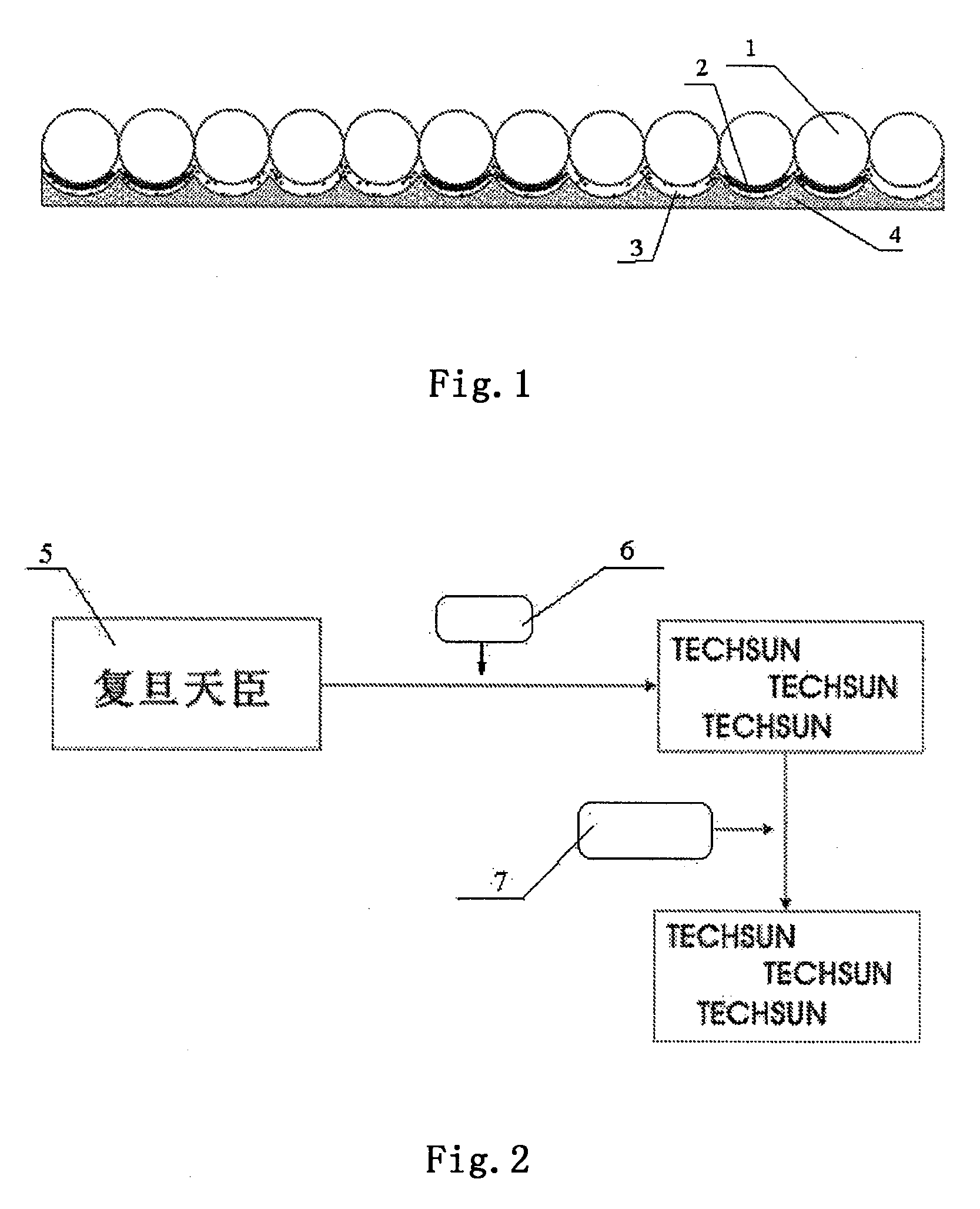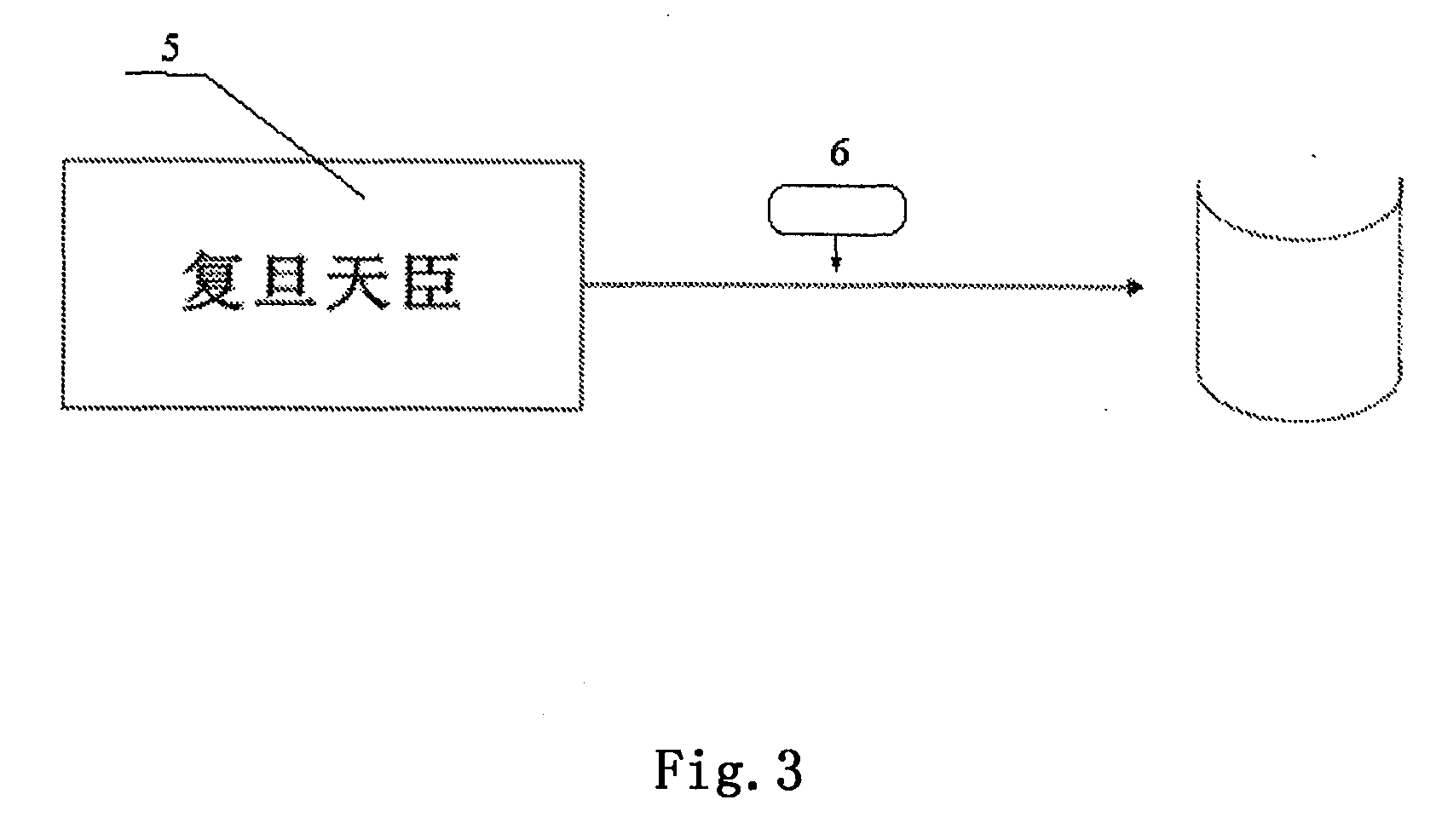Security film and process for preparation thereof
a security film and film technology, applied in the field of anti-counterfeiting film, can solve the problems of high price, limited application scope of traditional anti-counterfeiting products, and product defects of non-,
- Summary
- Abstract
- Description
- Claims
- Application Information
AI Technical Summary
Benefits of technology
Problems solved by technology
Method used
Image
Examples
example 1
[0036]A PET (polyethylene terephthalate) film was used as a base film, on which a liquid paraffin was coated as a release layer, then a spherical glass material having a diameter of 70 μm and a refractive index of 1.9 was implanted thereon to form a directional retroreflective layer. The resultant product was dried at 110° C. for 3 minutes, then an optical-angle-based color-changing cellulose material was printed via screen printing over the directional retroreflective layer to form an optical-angle-based color-changing information layer, wherein the composition and preparation process for the cellulose material were disclosed in Example 1 of CNO2136974.7. After that, a reflective layer material ZnO was vapor deposited over the information layer in high vacuum to a thickness of 60 nm, then polyurethane used as a material for a support layer was coated over the reflective layer, followed by drying at 120° C. for 3 minutes. Then the PET (polyethylene terephthalate) base film on the su...
example 2
[0041]A PET (polyethylene terephthalate) film was used as a base film, on which liquid paraffin was coated as a release layer, then a spherical glass material having a diameter of 100 μm and a refractive index of 1.93 was implanted thereon to form a directional retroreflective layer. The resultant product was dried at 100° C. for 3 minutes, then an optical-angle-based color-changing chiral polymer material was printed via flexographic printing over the directional retroreflective layer to form an optical-angle-based color-changing information layer, wherein the composition and preparation process for the chiral polymer material were disclosed in Example 1 of CNO3114913.8. After that, a reflective layer material ZnS was vapor deposited over the information layer in high vacuum to a thickness of 50 nm, then polyurethane used as a material for a support layer was coated over the reflective layer, followed by drying at 100° C. for 5 minutes. Then the PET (polyethylene terephthalate) bas...
example 3
[0046]A PET (polyethylene terephthalate) was used as a base film, on which liquid paraffin was coated as a release layer, then a spherical glass material having a diameter of 60 μm and a refractive index of 1.9 was implanted thereon to form a directional retroreflective layer. After drying, an optical-angle-based color-changing cellulose material (the optical-angle-based color-changing material as disclosed in Example 1 of CNO2136974.7) was coated via mesh coating over the directional retroreflective layer, to form a solid-plate optical-angle-based color-changing layer. After that, a reflective layer material ZnS was vapor deposited in high vacuum to a thickness of 20 nm, then polyurethane used as a material for a support layer was coated over the reflective layer. After drying, the PET (polyethylene terephthalate) base film on the surface and the release layer were removed to expose the directional retroreflective layer. As a result, an anti-counterfeiting film having the character...
PUM
| Property | Measurement | Unit |
|---|---|---|
| thickness | aaaaa | aaaaa |
| diameter | aaaaa | aaaaa |
| diameter | aaaaa | aaaaa |
Abstract
Description
Claims
Application Information
 Login to View More
Login to View More - R&D
- Intellectual Property
- Life Sciences
- Materials
- Tech Scout
- Unparalleled Data Quality
- Higher Quality Content
- 60% Fewer Hallucinations
Browse by: Latest US Patents, China's latest patents, Technical Efficacy Thesaurus, Application Domain, Technology Topic, Popular Technical Reports.
© 2025 PatSnap. All rights reserved.Legal|Privacy policy|Modern Slavery Act Transparency Statement|Sitemap|About US| Contact US: help@patsnap.com



